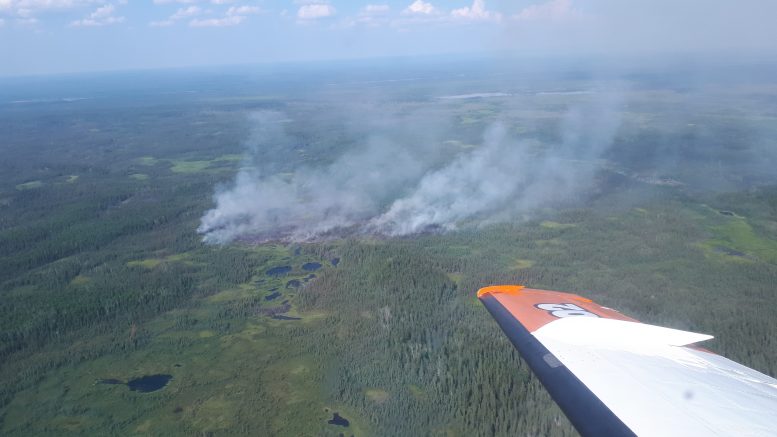As fire season comes to a close, the department of Environment and Natural Resources (ENR) is thanking residents for limiting human-caused fires this past year.
Mike Westwick, a spokesperson for ENR, says only about 12 per cent of the fires this season were human-caused. This number is typically around 15 to 20 per cent.
“Although wildfires are a natural occurrence that is absolutely necessary for a healthy ecosystem, human-caused wildfires never need to happen. These are generally much more dangerous to people and property,” he says.
Westwick said the limited number of human-caused fires was particularly impressive considering record heat levels this past summer.
The territory was even able to lend support to six other provinces who were fighting their own wildfires.
The number of fires this season was significantly less than what was expected, which has followed a trend for the previous few years.
Richard Olsen, wildfire operations manager for ENR, says the NWT dealt with about 66 per cent of the wildfires they were expecting to deal with this year. He says one reason it was so much lower than expected could be higher water levels.
“When you look at the South Slave and the flooding that occurred, that represents higher water levels, that’s likely the primary reason,” he said. “Simply because in an area where we were expected to see anywhere from 70 to 80 fires a year caused by lightning, they only had nine.”
The NWT dealt with 139 wildfires total this year, when that number is typically around 200.
But despite the low number of fires and area burned, Olsen says there still were threats to communities and infrastructure this season.
“That really amounted this year to a significant amount of work of those in the field,” he said.
Preventing a tragedy
In late June a wildfire in B.C. burned down the small village of Lytton and led to two fatalities.
The incident was horrifying but as temperatures hit record levels across the country, it was a warning of what the future could be.
Olsen says the NWT has several warning systems in place to prevent a similar incident.
“The way we manage our fires is really based upon having preparedness in place and a way to fight fires when they’re a relatively small size,” he said.
Olsen says there is a monitoring system in place where staff will look for smoke or possible fire hazards across the territory. Additionally, ENR uses satellite detection to determine hotspots in remote areas.
“Any fire that is close to or threatening a community, we work in partnership with emergency measures both at the territorial and regional level to inform them of the potential risk of the wildfire and to support them in decisions,” he said.
But Olsen said an overall message is that when it’s very hot, dry and windy, fires can become active and move quickly.
“It may be dangerous for us to put people in front of that,” he said.
This is why mitigation, including lessening the number of human-caused fires, is important, he concludes.





